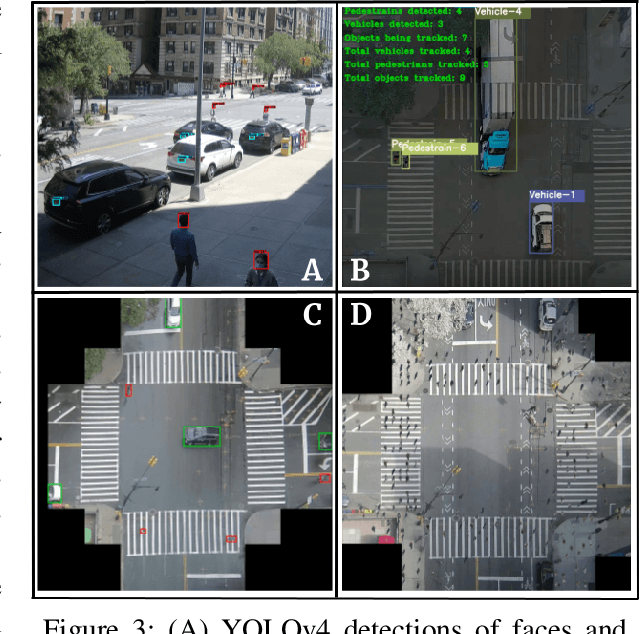Zhuoxu Duan
Large Language Models for Automatic Milestone Detection in Group Discussions
Jun 16, 2024Abstract:Large language models like GPT have proven widely successful on natural language understanding tasks based on written text documents. In this paper, we investigate an LLM's performance on recordings of a group oral communication task in which utterances are often truncated or not well-formed. We propose a new group task experiment involving a puzzle with several milestones that can be achieved in any order. We investigate methods for processing transcripts to detect if, when, and by whom a milestone has been completed. We demonstrate that iteratively prompting GPT with transcription chunks outperforms semantic similarity search methods using text embeddings, and further discuss the quality and randomness of GPT responses under different context window sizes.
Smart City Intersections: Intelligence Nodes for Future Metropolises
May 13, 2022



Abstract:Traffic intersections are the most suitable locations for the deployment of computing, communications, and intelligence services for smart cities of the future. The abundance of data to be collected and processed, in combination with privacy and security concerns, motivates the use of the edge-computing paradigm which aligns well with physical intersections in metropolises. This paper focuses on high-bandwidth, low-latency applications, and in that context it describes: (i) system design considerations for smart city intersection intelligence nodes; (ii) key technological components including sensors, networking, edge computing, low latency design, and AI-based intelligence; and (iii) applications such as privacy preservation, cloud-connected vehicles, a real-time "radar-screen", traffic management, and monitoring of pedestrian behavior during pandemics. The results of the experimental studies performed on the COSMOS testbed located in New York City are illustrated. Future challenges in designing human-centered smart city intersections are summarized.
 Add to Chrome
Add to Chrome Add to Firefox
Add to Firefox Add to Edge
Add to Edge